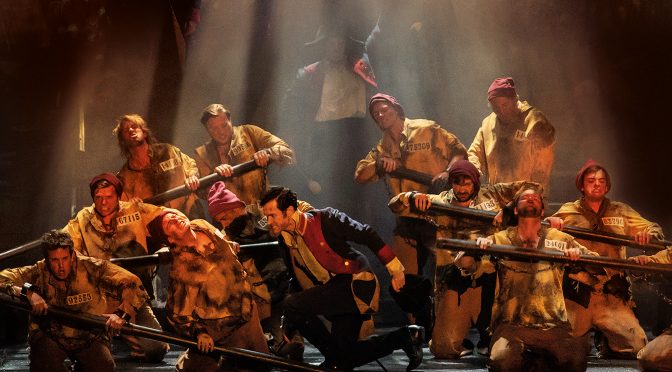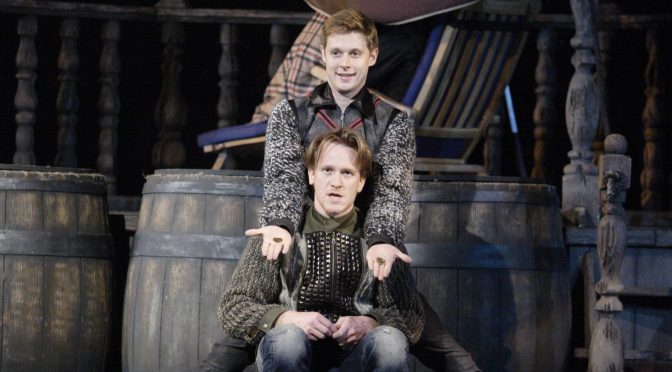The creative crew for this new musical thriller, based on Graham Greene’s spy classic, cannot fail to impress. The book and lyrics are by the renowned Don Black and Christopher Hampton. The music is from none other than George Fenton. And Trevor Nunn himself directs. The experience behind the show is almost intimidating and the result of all this consummate skill makes it hard to find flaws. With one caveat.
Black and Hampton do their strong source material proud. The story of old friends Holly Martins and Harry Lime in post-war Vienna is well known but thrilling. Greene’s themes of innocence and corruption become vivid, the moral dilemmas vital. There are strong moments of absurdity and cruel humour while exposing villainy. The lyrics may not excite, but they are a model of clarity. Best of all, the characters are fantastic.
Martins describes himself as a “hack writer who drinks too much”. But he is much more and, as Sam Underwood’s fraught performance in this enormous role reveals, he intrigues. Is he a hapless figure who finds the desperation on the streets of Vienna contagious? Or is he troubled on arrival? There’s something unnerving as well as innocent about the laugh Underwood employs. And, as the night goes on, he genuinely looks ill.
Lime appears late in the story, but the criminal mastermind looms large over everything. Simon Bailey’s charisma in the role – and a jaunty entrance number – make the wait for his arrival worth it. The stage is electric whenever Bailey occupies it. Meanwhile, the bigger winner in making the story a musical is the love interest, Anna. Performed with skill by Natalie Dunne, the character has a satisfying agency. And as a cabaret singer she provides some humour. The big idea is to emphasis the romance in The Third Man.
The love songs are some of the score’s finest moments, though Fenton’s music is accomplished throughout. If there aren’t enough memorable tunes for all tastes, this is an erudite score to study. Full of references and interest, it sets time and place with intelligence. The theme tune of the film (by Anton Karan) does appear – oh, so, very well placed – but its inclusion is the least of Fenton’s achievements.
Final praise is for Nunn’s direction – big and ambitious, despite the small venue. Nunn is too enthralled by the famous film – it was by Carol Reed, after all! Which cannot apply to Rebecca Howell’s choreography, at its best in more manic moments. Paul Farnsworth’s set and costumes are appropriate studies in shades of grey. Add Emma Chapman’s lighting design and it all looks very stylish. If the action is followed too faithfully, the amount packed on to the stage is fantastic.
With all this undoubted ability, where is my reservation? This crew knows what it’s doing and has created a grown-up musical that is credible. Nor can you question the amount of work behind the show or on stage from a committed ensemble. Not only does everyone run around (a lot), it is clear that every decision is considered. But – it is a strange flaw to find – that becomes the problem. There’s no spark, no adventure. Everything runs so very well that there is nothing unexpected. So, while The Third Man is a musical to admire, it is not, theatrically, a thriller.
Until 9 September 2023
www.menierchocolatefactory.com
Photo by Manuel Harlan















